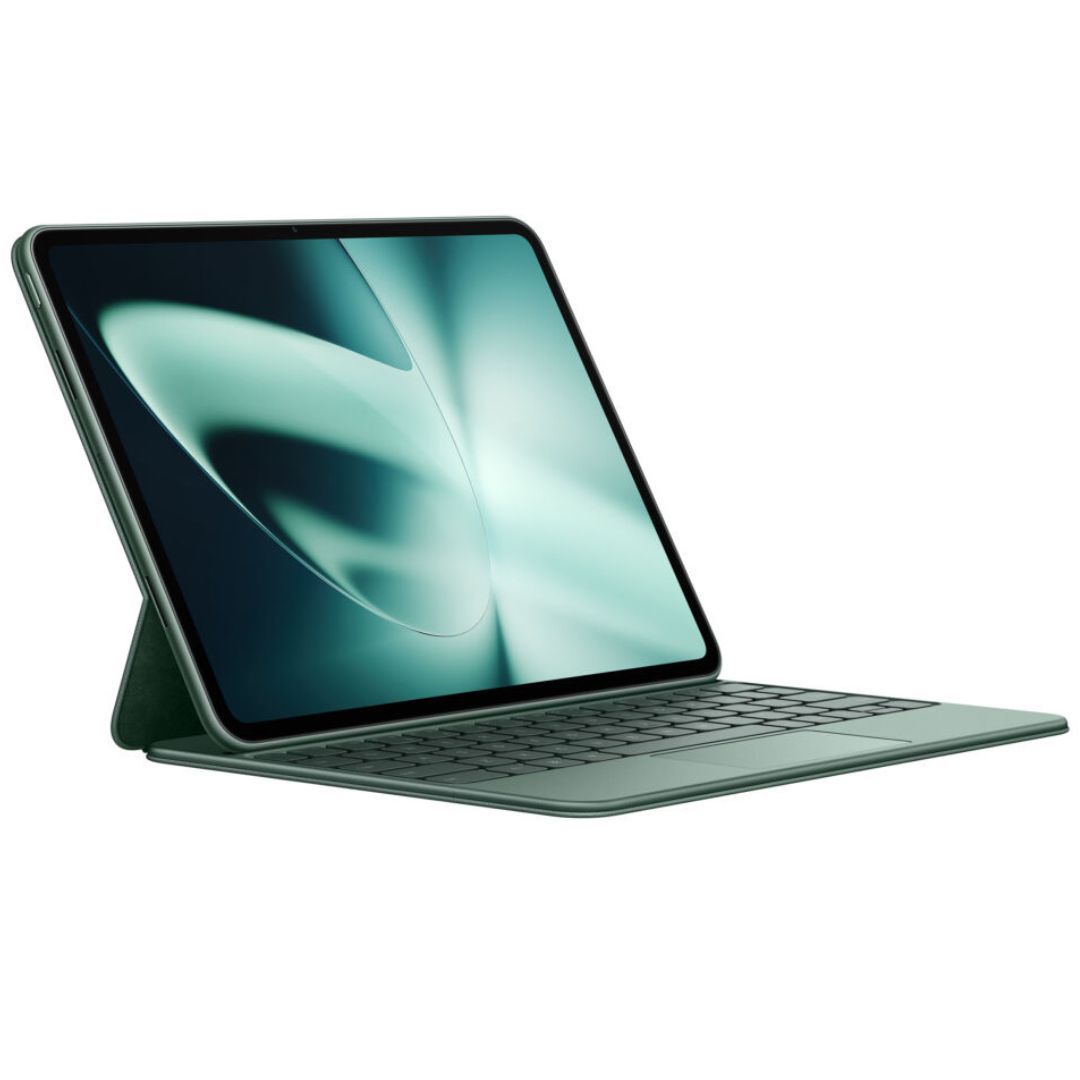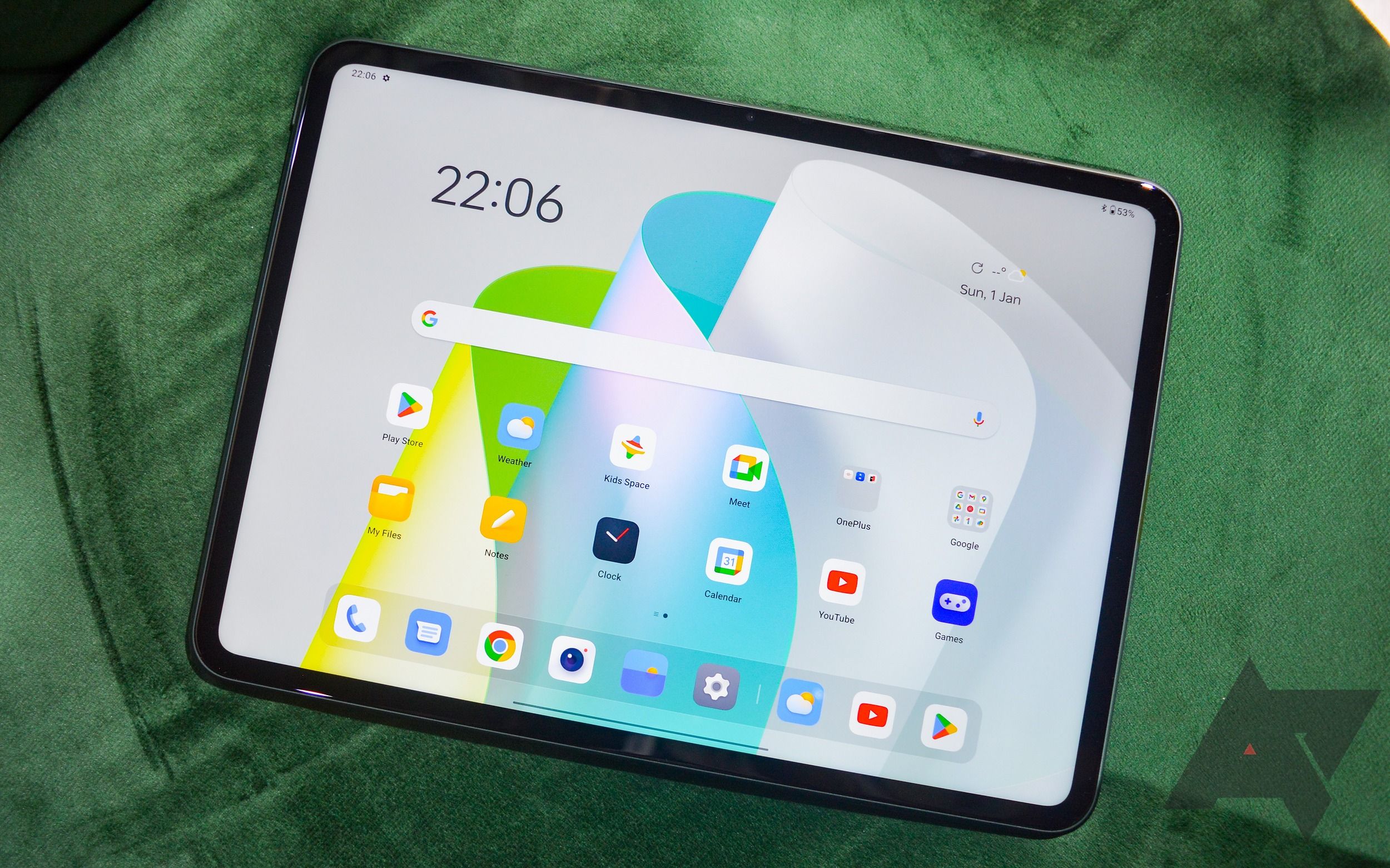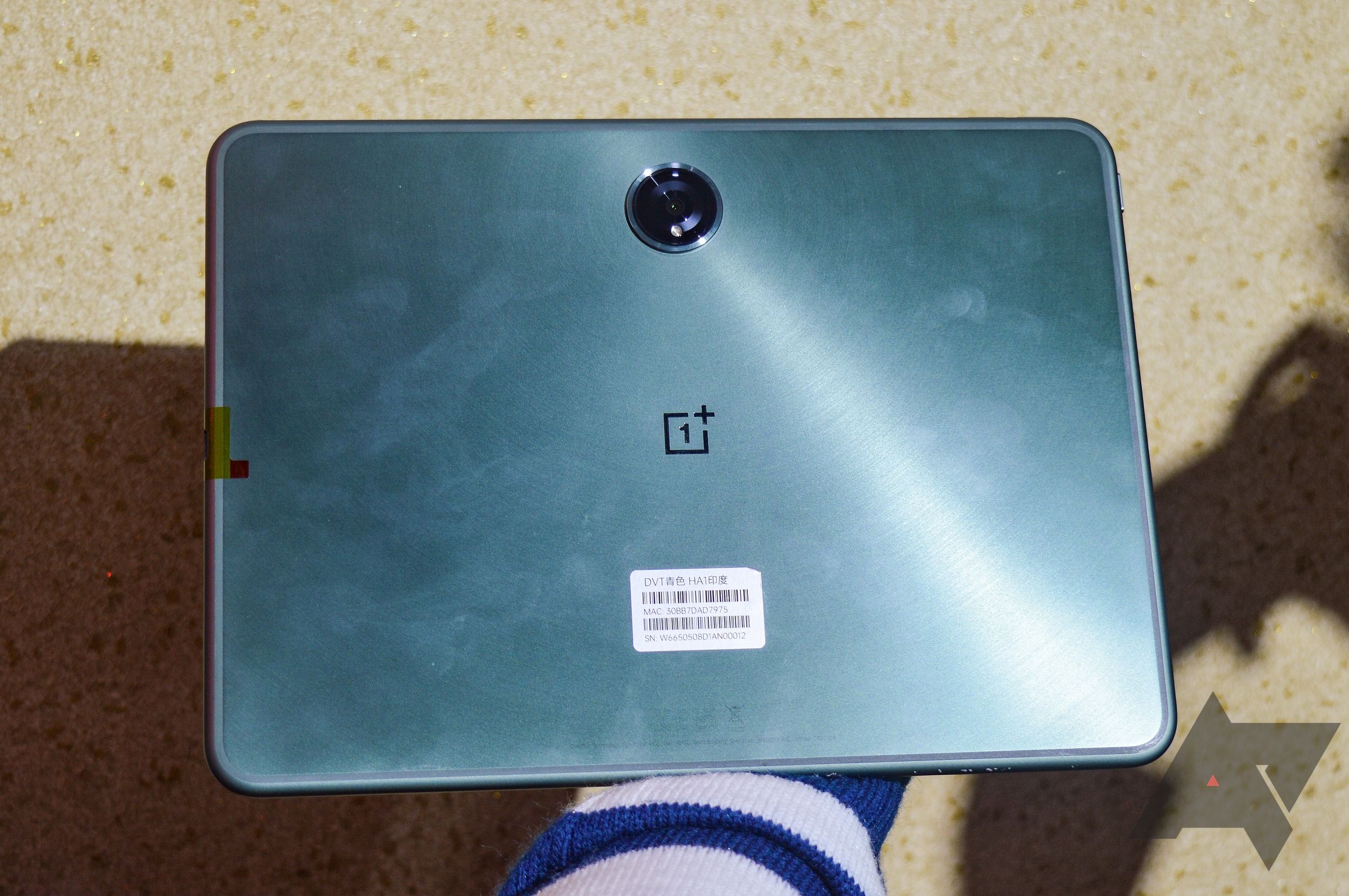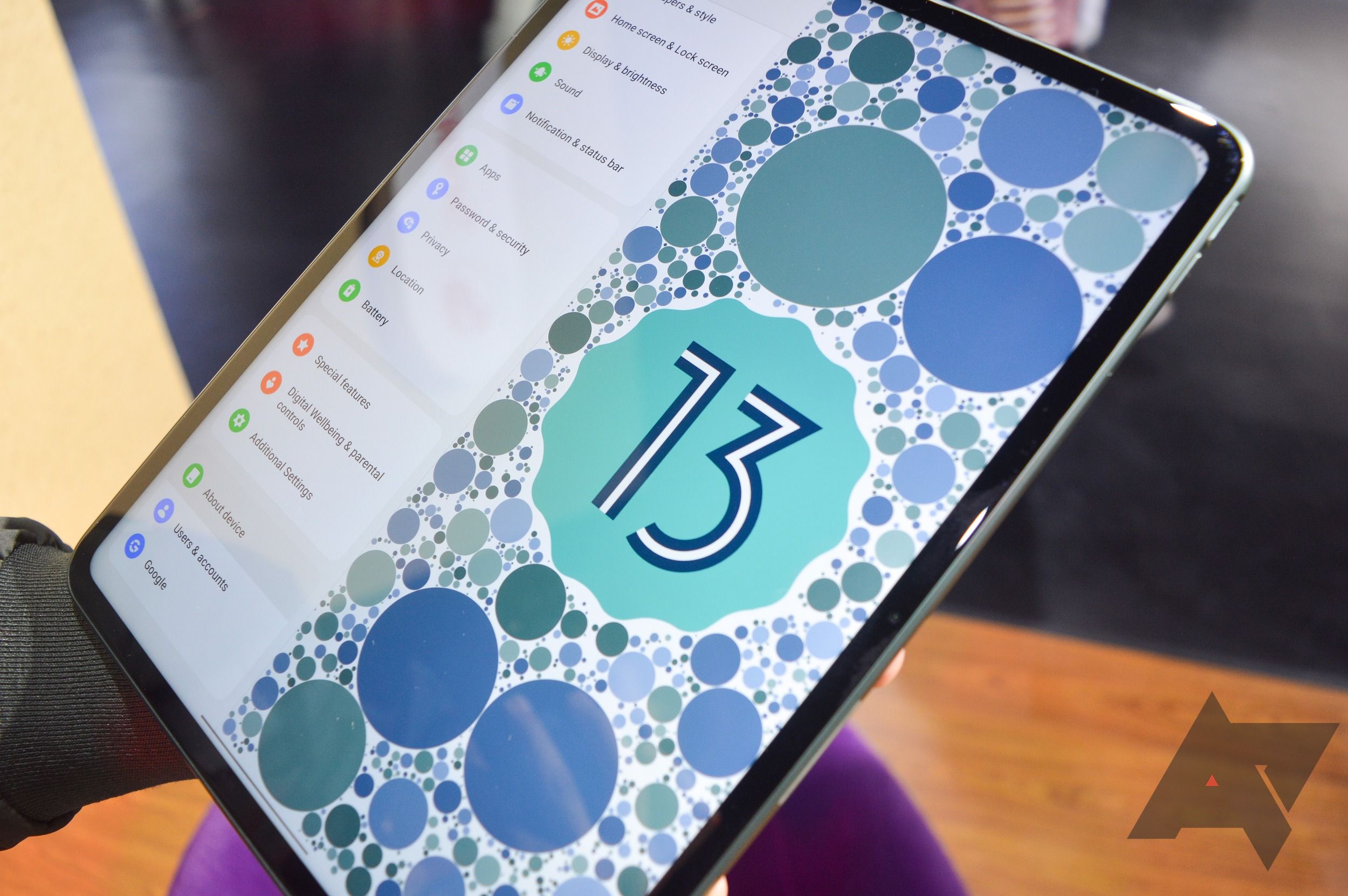We’ve been hoping to see a OnePlus tablet ever since Oppo came out with its slate last year. During the OnePlus 11 launch, we finally got to see the long-rumored OnePlus Pad. The tablet is certainly one of the most exciting products from OnePlus in recent times as it marks the company’s foray into a new category. The OnePlus Pad boasts a lot of interesting features and makes full use of the larger OnePlus ecosystem with several software tricks. The good news is that OnePlus has confirmed the tablet will be coming to North America, as well as Europe and India. While we wait to fully review the OnePlus Pad later this year, here are our first impressions of the company’s first tablet.

OnePlus Pad
The first tablet from OnePlus packs a sizeable 11.61-inch display that's sure to catch your eye, especially with its unusual 7:5 ratio and zippy 144 Hz refresh rate, making scrolling as smooth as silk. Under the hood, it's powered by the MediaTek Dimensity 9000 chipset, a heavyweight contender in the processor world, ensuring top-notch performance.
- CPU
- MediaTek Dimensity 9000
- Memory
- 8GB
- Operating System
- Android 14 and OxygenOS 14
- Battery
- 9,510mAh
- Ports
- USB-C
- Camera (Rear, Front)
- 13MP rear, 8MP front
Design and display
Starting with the aesthetic, that green shade of the OnePlus Pad looks great in photos, but it’s even better in person. The cold-to-touch metal back makes you feel you’re holding something sturdy, something premium. Although as you can see, it's a fingerprint magnet. The centered circular camera island (when held in landscape) makes the tablet instantly recognizable. The camera’s position actually makes sense as it won’t get in your way when you’re holding the tablet horizontally, say while working or watching a movie.
OnePlus wants you to use the tablet in landscape mode. It has gone for an unconventional 7:5 aspect ratio for the 11.6-inch display on the front. This gives you additional space to see more of the webpage or the document you’re writing in. However, if you tend to use your tablet for entertainment, you’re sure to find thicker black bars with this aspect ratio when compared to the Galaxy Tab S8’s 16:10 display.
The screen has a resolution of 2000 x 2800, which means 296 pixels per inch. For an LCD, the screen looks fantastic — it was quite hard to tell it apart from an OLED. The resolution makes it sharper than most other tablets in its category. It also has an adaptable refresh rate of up to 144Hz which is dependent on which apps you're using.
Despite its size, the OnePlus Pad didn’t feel uncomfortable to hold. It’s quite thin and light for you to carry around. There's an add-on magnetic keyboard accessory and a stylus for the tablet, but neither of these accessories were demoed at the event. Both of these will be sold separately, so you won't get these included in the box.
Software and performance
While OnePlus hasn’t been at the top of its software game lately, it’s still OxygenOS that defines the OnePlus experience. And on the OnePlus Pad, the company seems to have done quite a bit to get things right. For starters, the tablet comes loaded with a heavily customized version of OxygenOS based on Android 13. You will find an app dock at the bottom, while most of the first-party apps have been redesigned to include a multi-column view to make better use of the available display area.
On top of that, OnePlus is also bringing some ecosystem features to the tablet. For instance, the Pad can easily share your OnePlus phone’s 5G network without the need to set up a hotspot manually. Similarly, the tablet has the phone app preinstalled even though it doesn’t support cellular connectivity, indicating a cross-device call sync feature, similar to what you get with Apple and Samsung tablets.
During our brief time with the tablet, the software felt vibrant, and everything looked well thought out. However, the Pad's performance didn’t feel super smooth even though it uses a flagship-class MediaTek processor. There were a few hiccups here and there like app launches that took a couple of beats more than they should have. Such optimization issues are pretty common for the kind of early software version that the demo unit was running. OnePlus will likely iron them out by the time the tablet comes close to its release in April.
As for the tablet’s battery life, OnePlus claims a fantastic month-long standby time. OnePlus phones have featured super-fast charging technology, and that's now coming to the tablet as well. With 67W SuperVOOC charging, the Pad can juice up to 80% in under an hour, which is impressive for a massive 9,510mAh battery.
OnePlus Pad: Adding the missing piece in the puzzle
After a tough couple of years, OnePlus is entering a new product category to broaden its horizons. The OnePlus Pad is going official right around when Google started focusing on optimizing Android for tablets. Bringing together what both companies do the best could potentially give tough competition to the market-leading Apple iPads and some of the best Android tablets out there. And so far, things look promising for the OnePlus Pad.
OnePlus is making the most of its small ecosystem of devices, by adding cross-device capabilities for the tablet to work seamlessly with its phones and earbuds. The company is going all in on its tablet package, and we're excited to try out the first-party stylus and a magnetic keyboard attachment — two must-have accessories for modern tablets.
While the OnePlus family now looks more complete with the addition of the OnePlus Pad, the pricing will likely make or break the tablet. We’ll have to wait for a little longer to see how OnePlus prices its first tablet. Pre-orders for the tablet are expected to begin in April, but we don't yet have any more details on a release date. Until then, you can check out our full review of the flagship OnePlus 11 5G and the Buds Pro 2, which launched alongside the tablet at the company’s Cloud 11 event.



